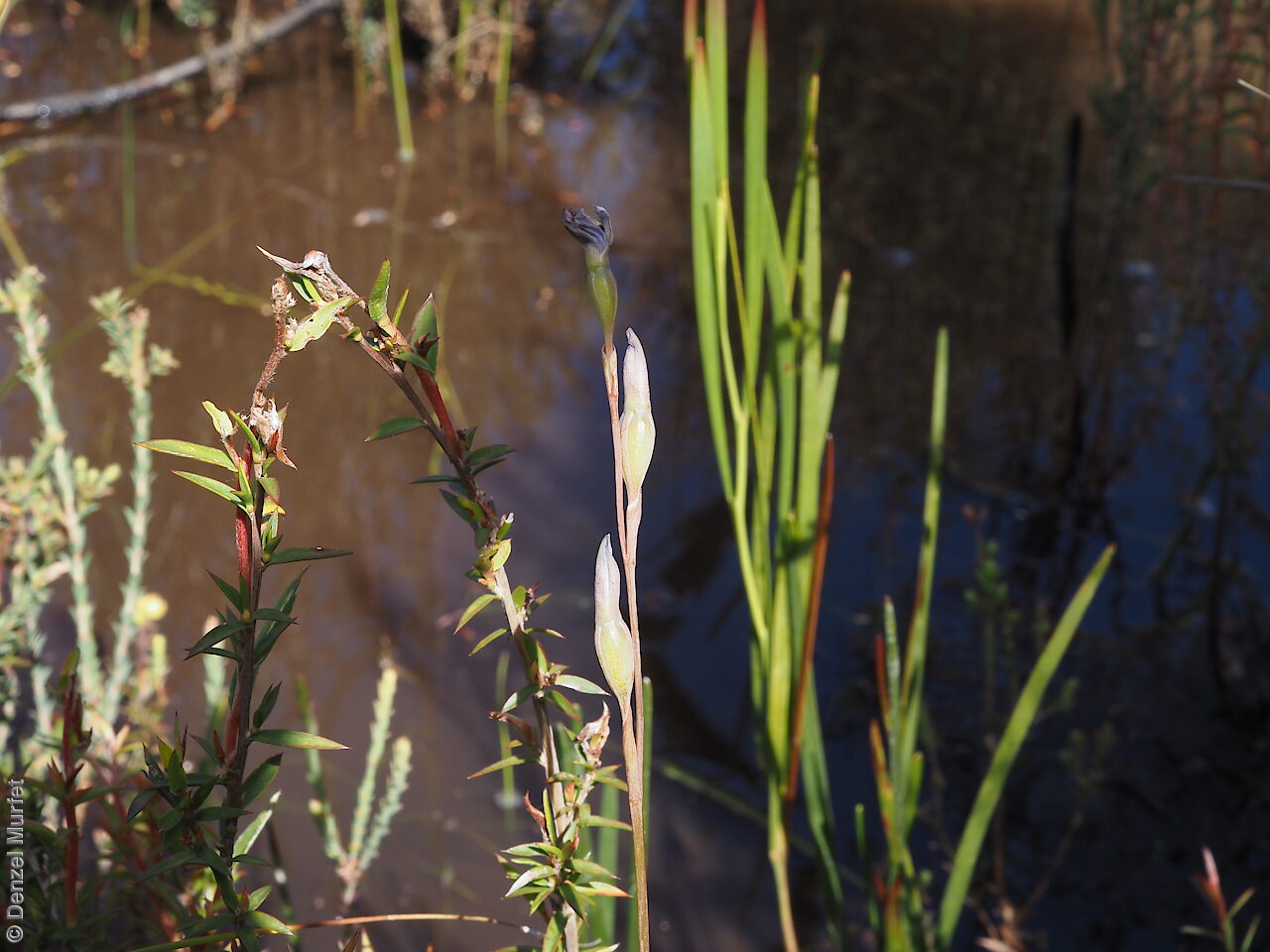
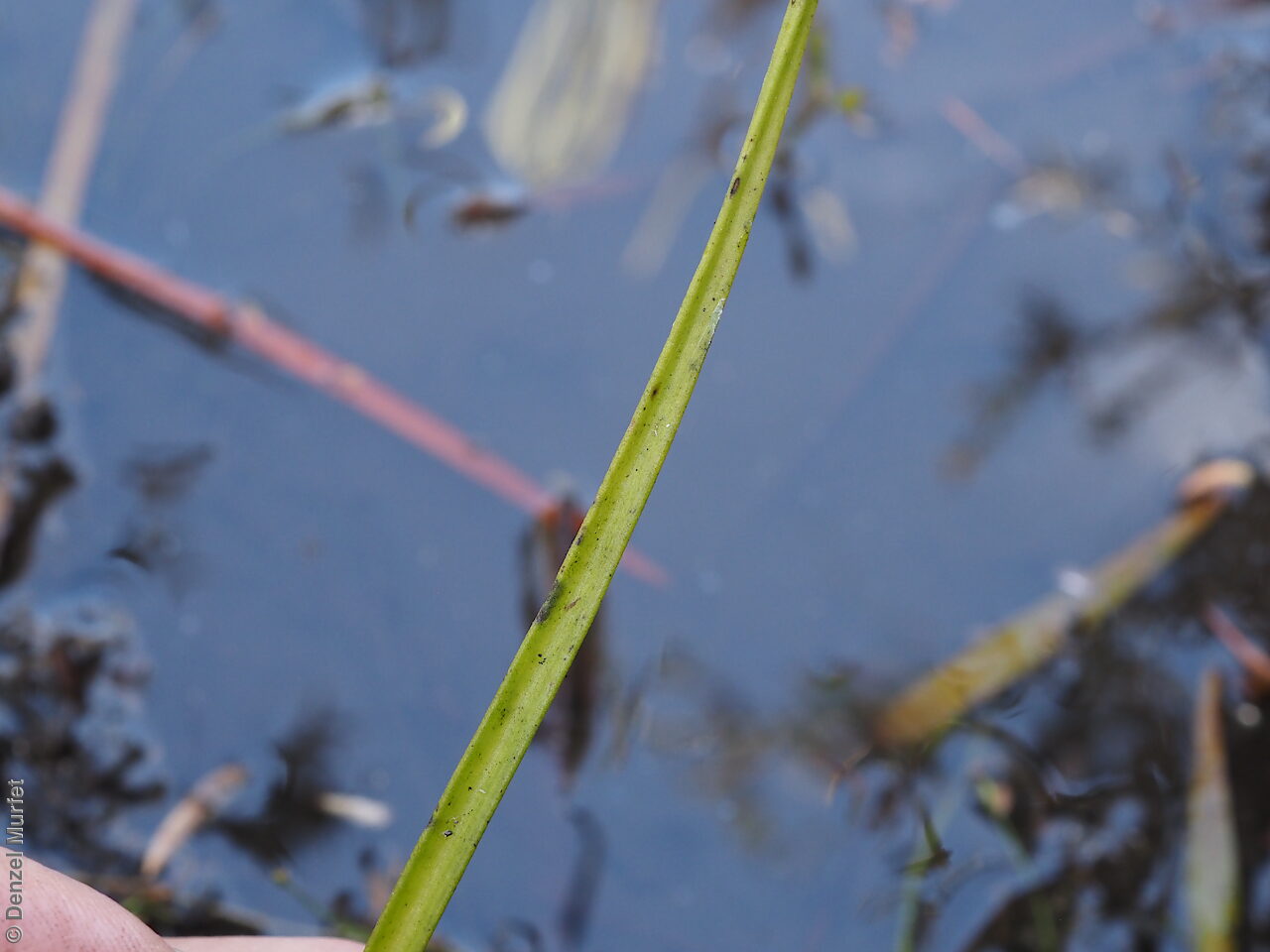
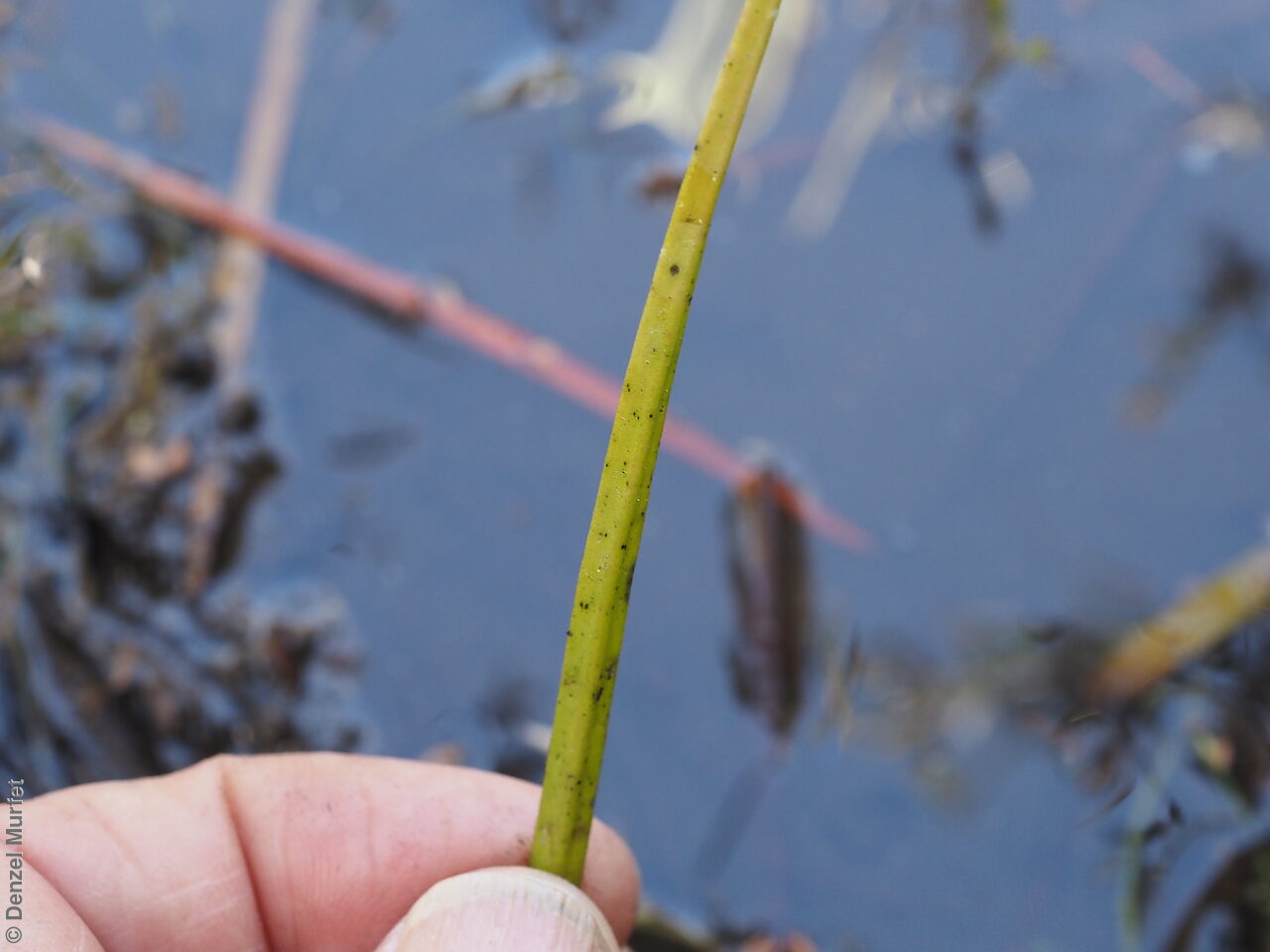
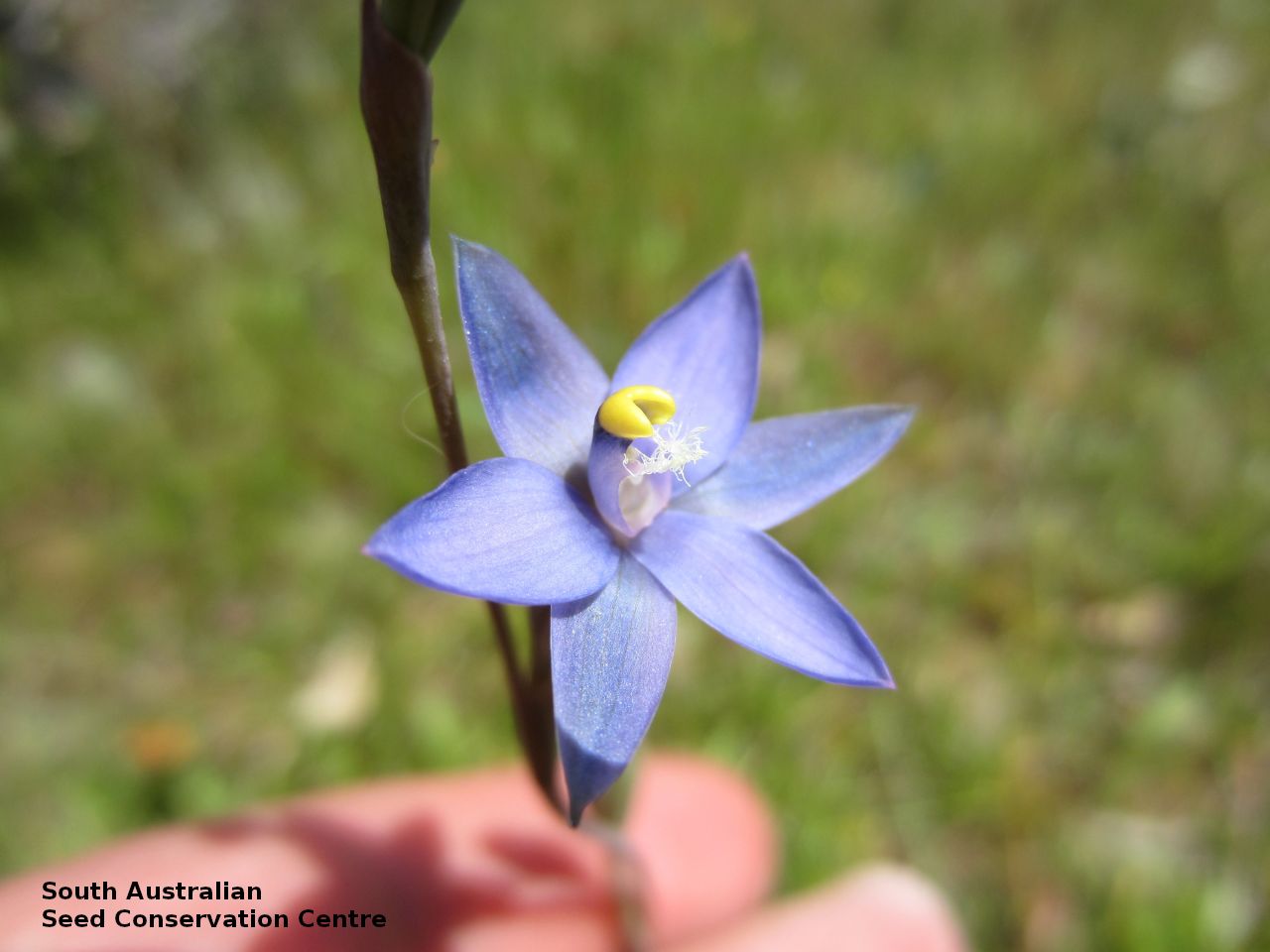
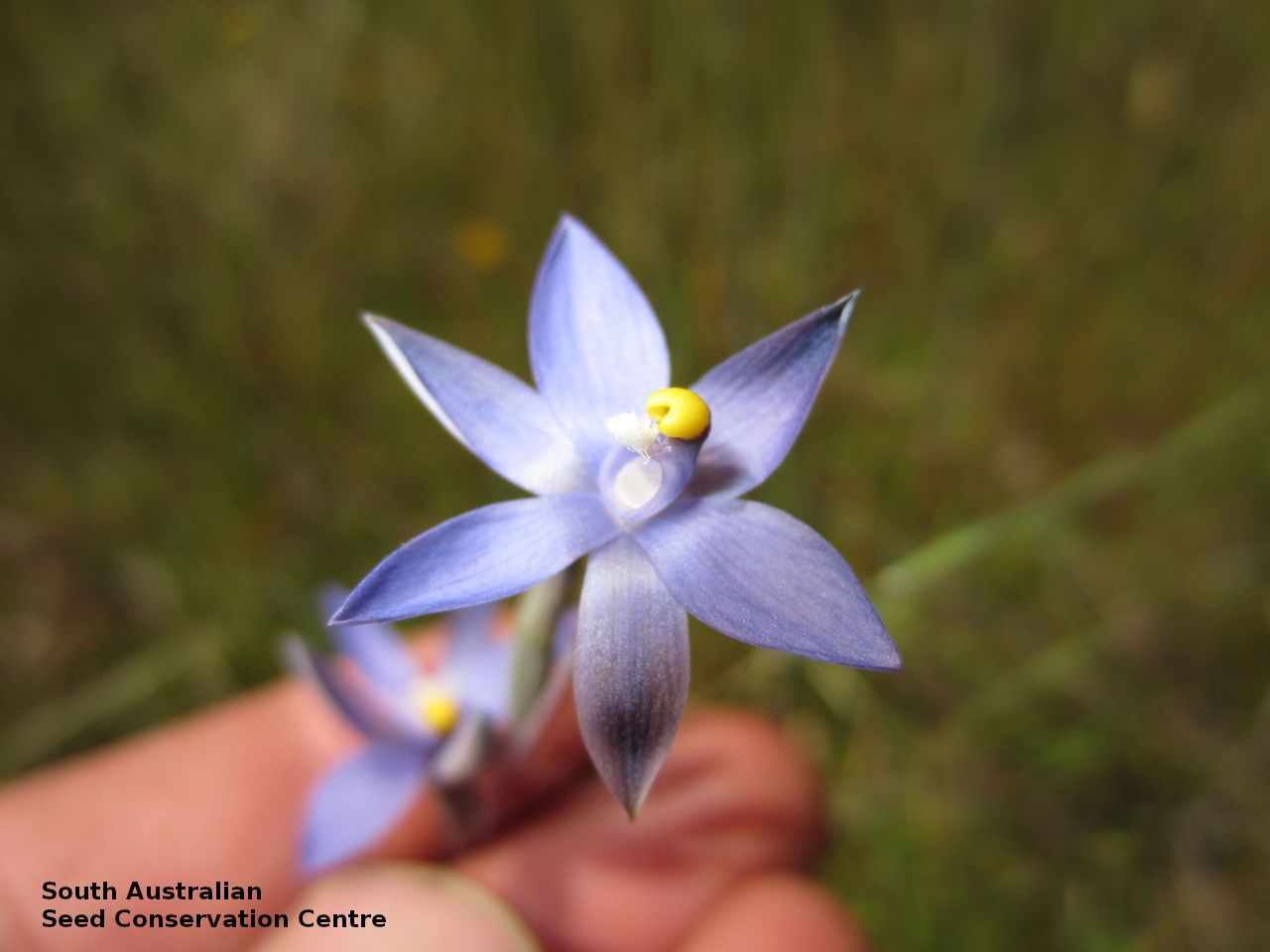
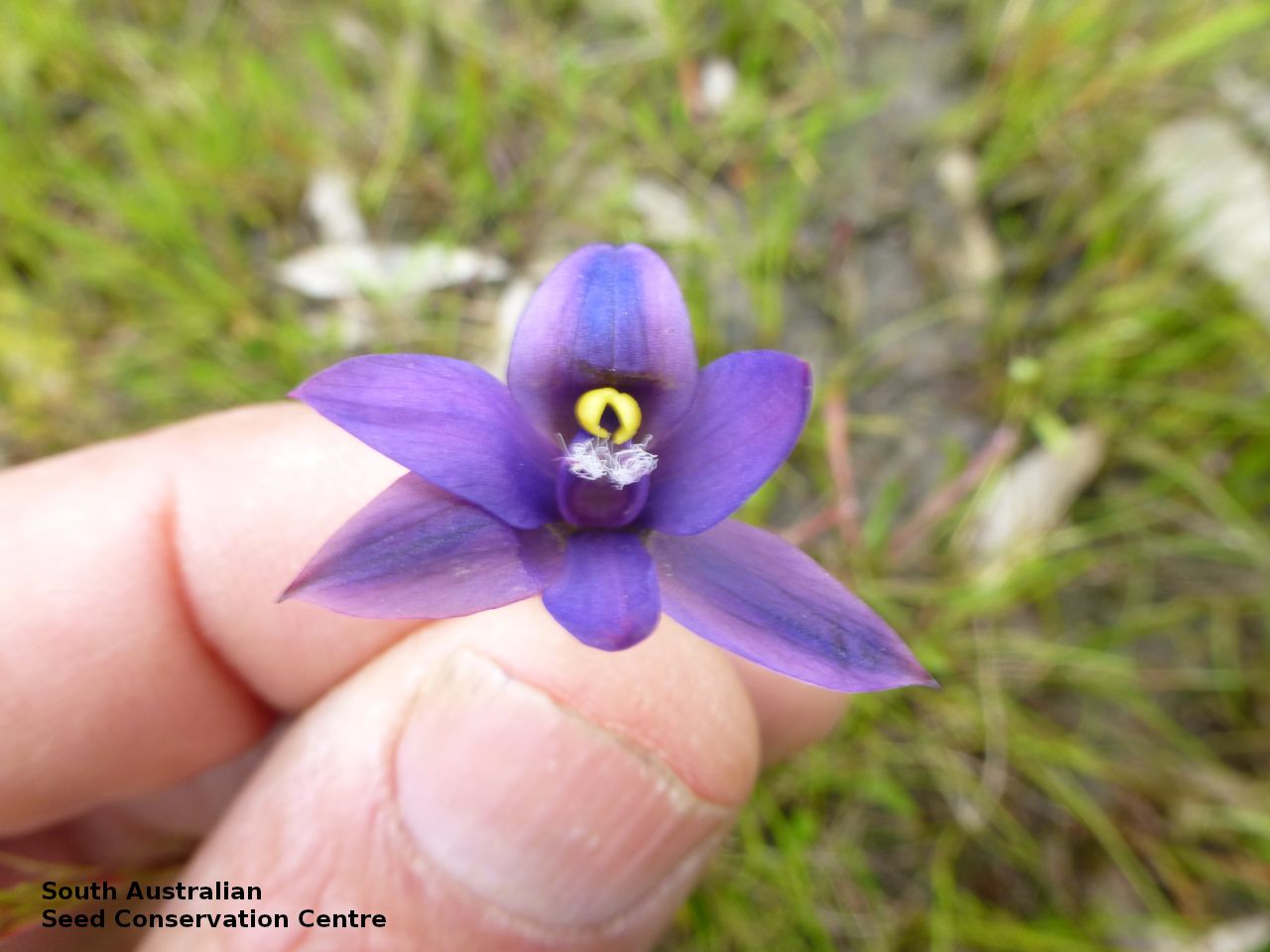
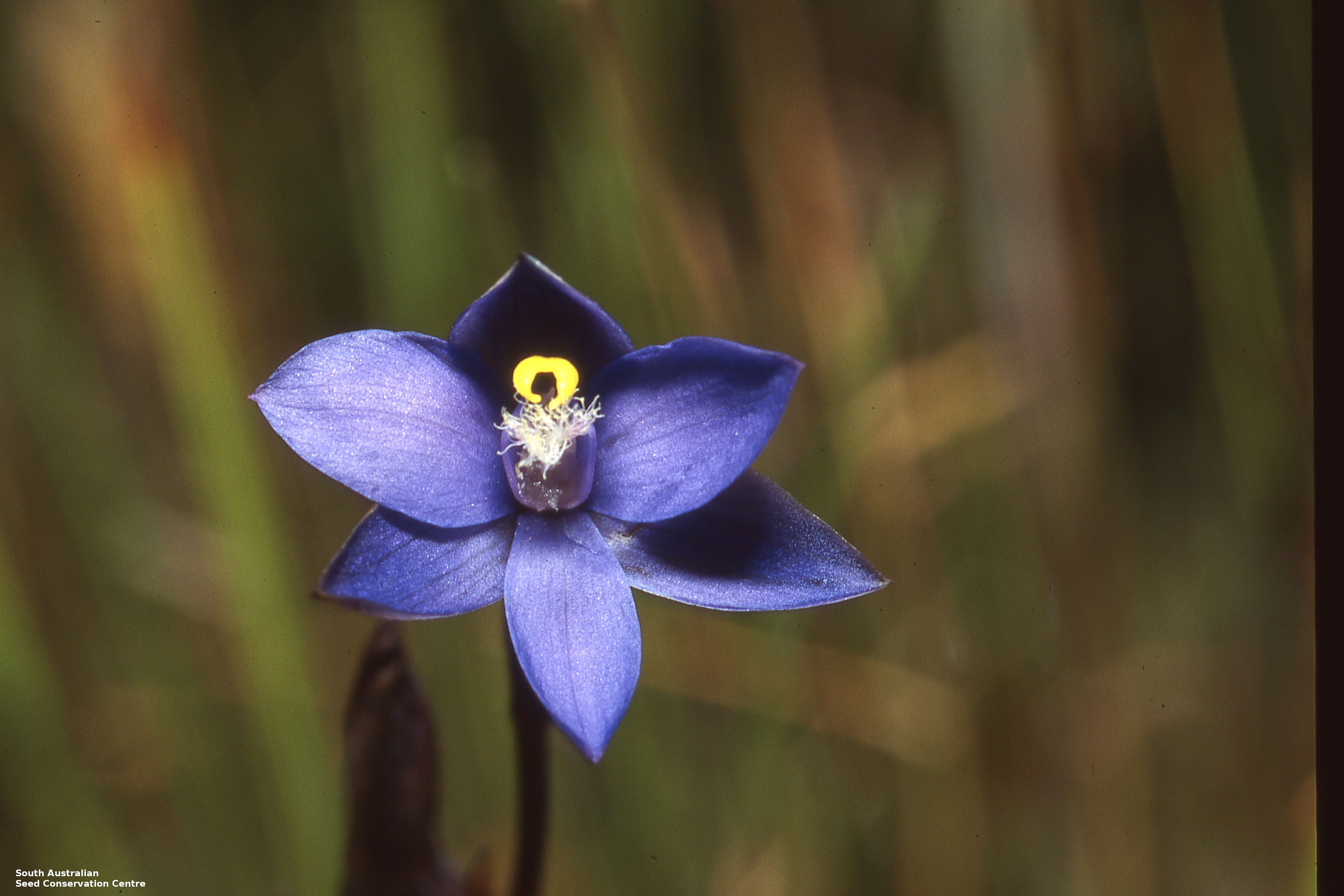
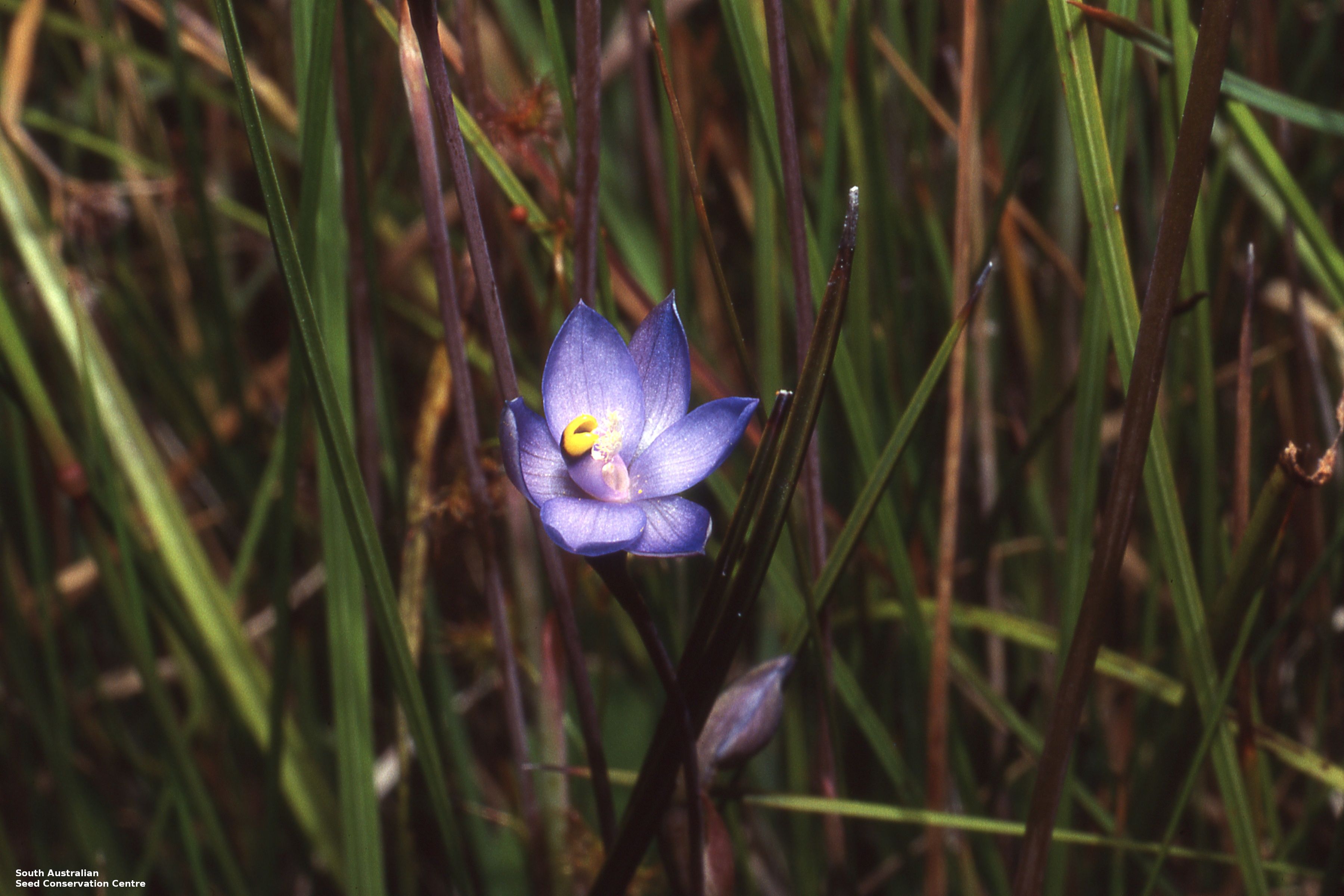
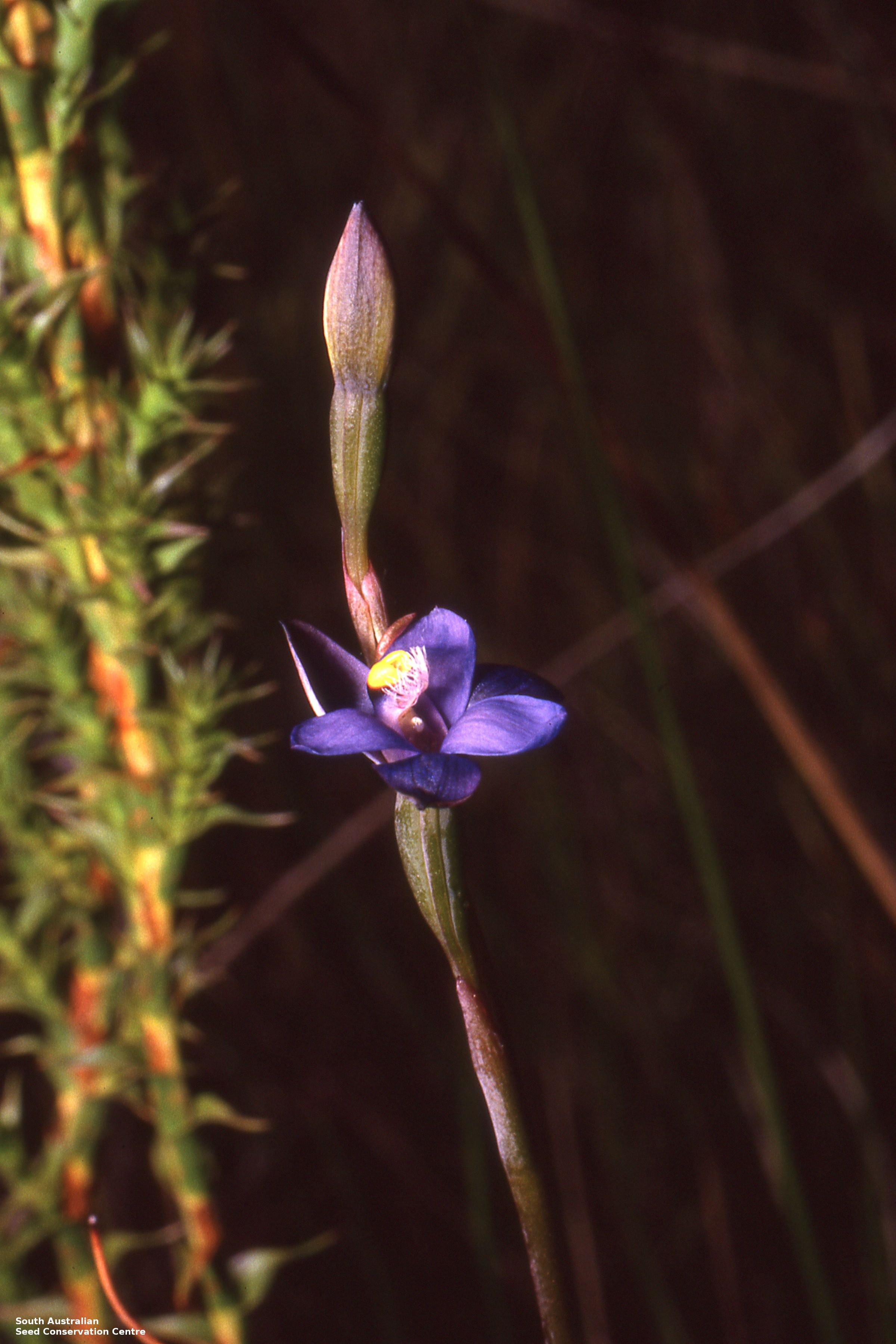
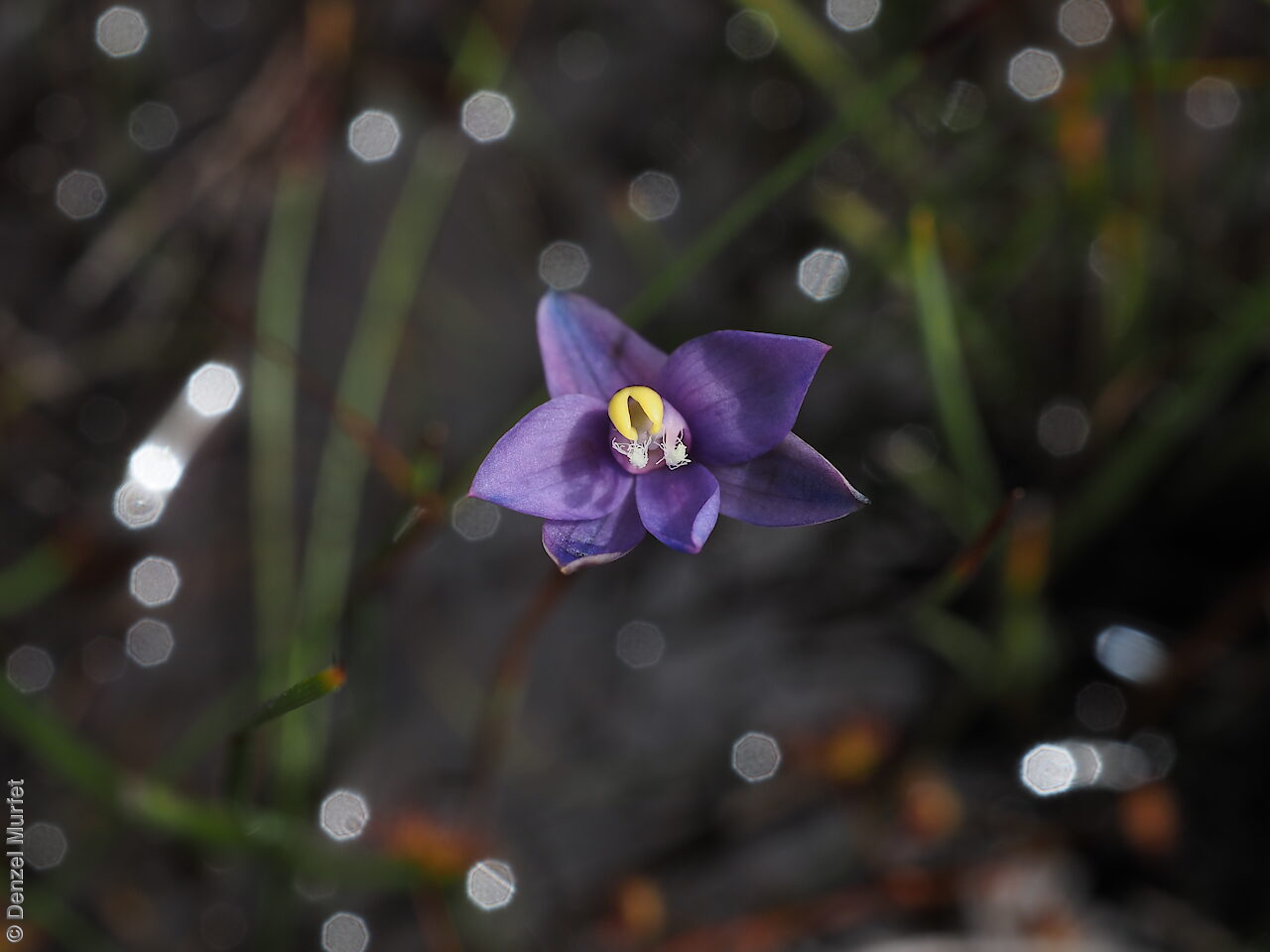
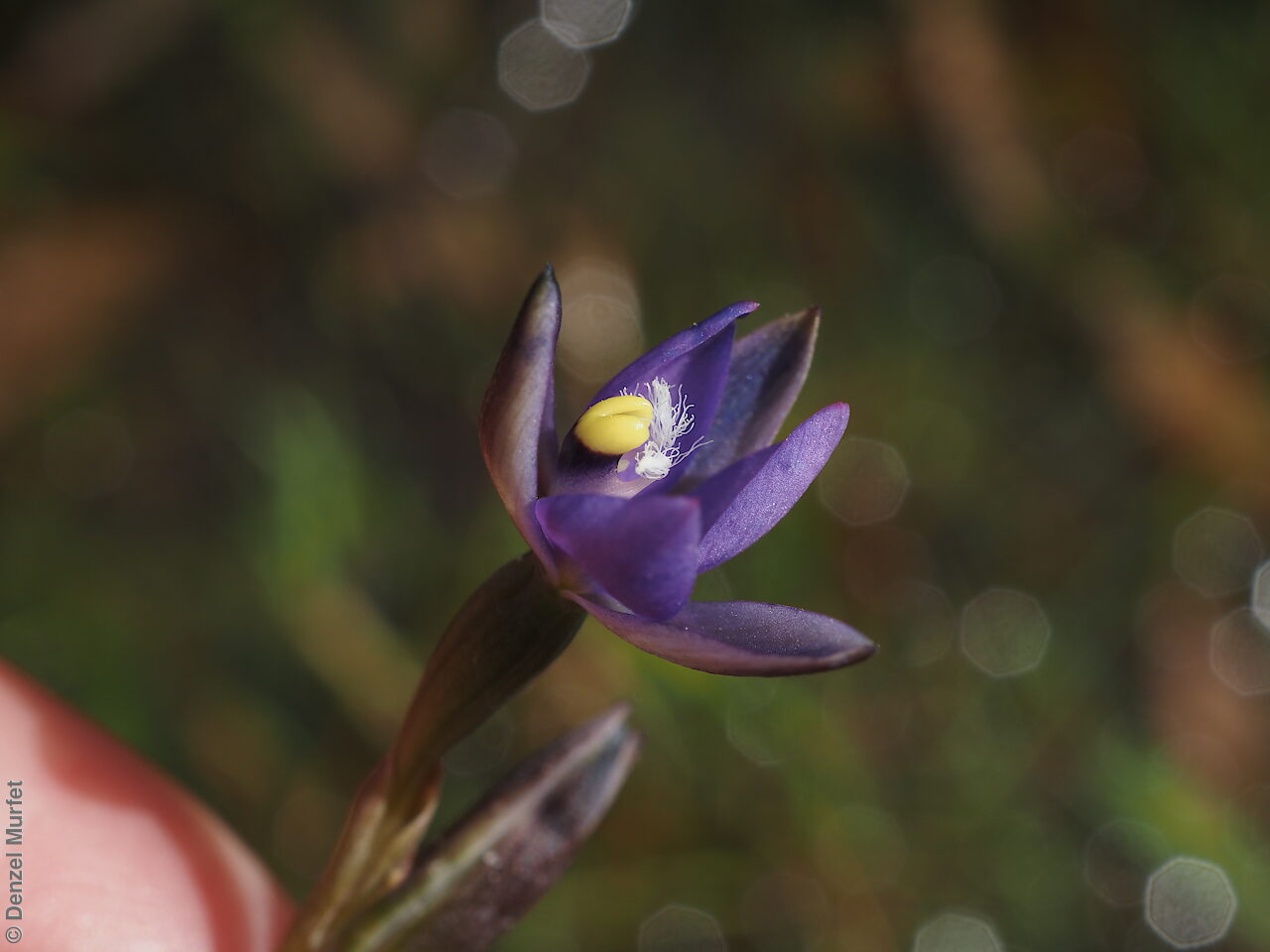
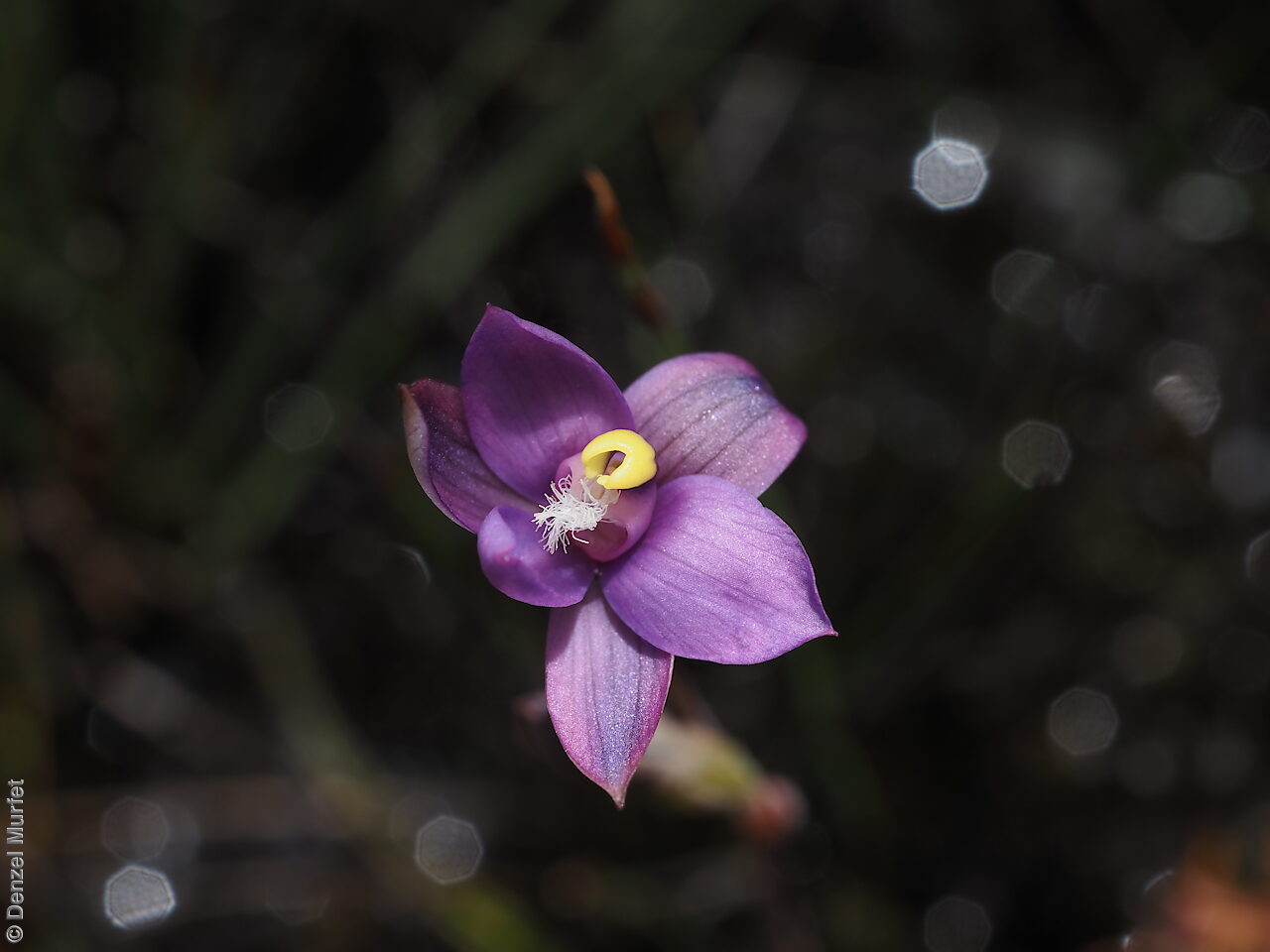
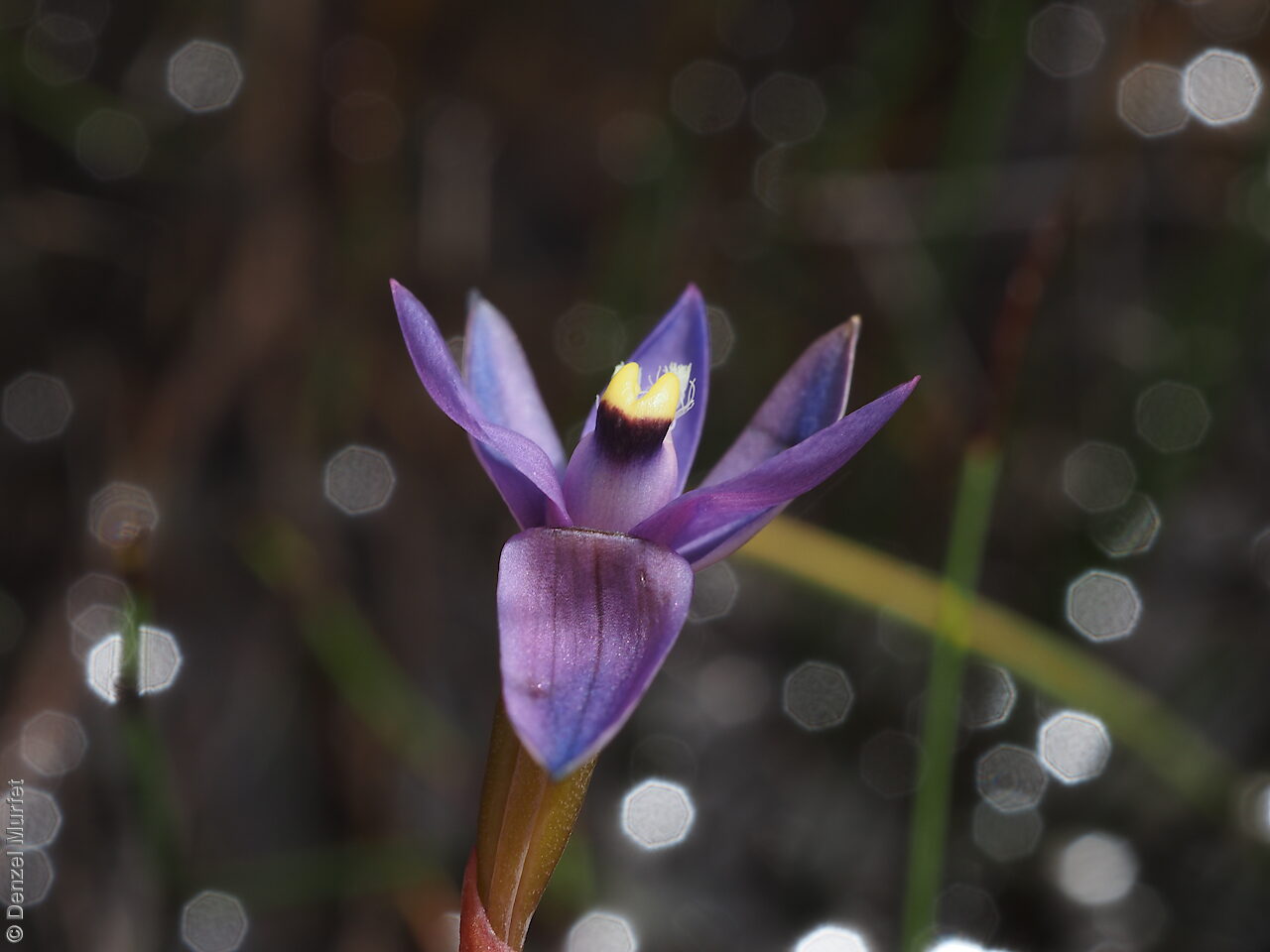
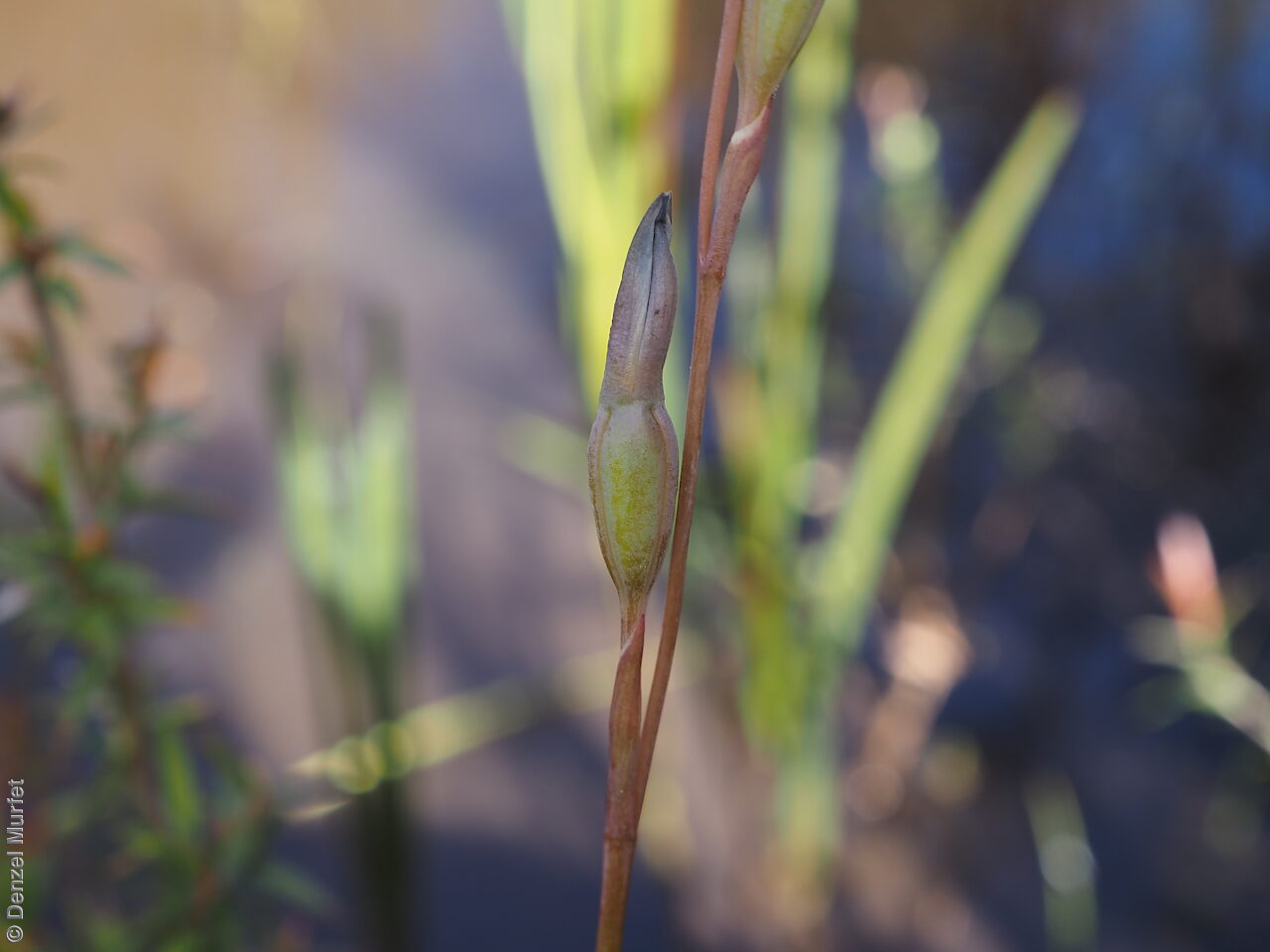
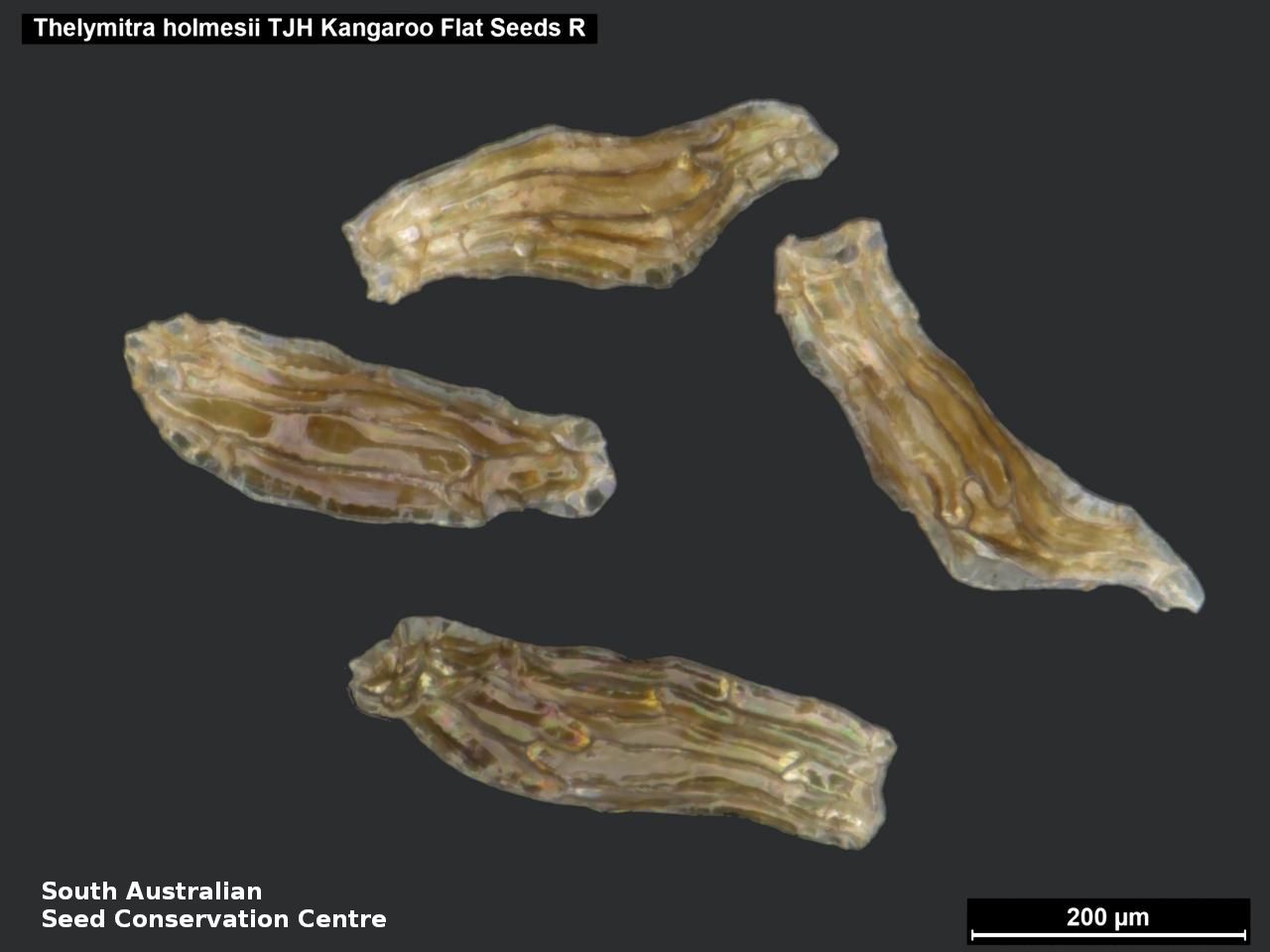


Botanical art
Prior names
Thelymitra pauciflora var. holmesii
Common names
Holmes Slender Sun-orchid
Blue Star Sun-orchid
Slender Swamp Sun-orchid
Etymology
Thelymitra from Greek 'thelys' meaning a bishop and 'mitra' meaning a headwear, hat, hence a bishop’s mitre, referring to the sometimes plumed or decorated wings of the column, which is usually produced behind and over the anther in a hood-like projection. Holmesii named after Murray Holmes of Portland, who collected the type specimen from Gorae (via Portland) in Victoria in 1932.
Distribution and status
Found in the southern Mount Lofty Ranges, the west end of Kangaroo Island and the lower South-east in South Australia, growing in areas of high rainfall, in sandy heathland around swamp margins, Leptospermum continentale shrubland with sedge and fern understorey and creeklines. Also found in Victoria and Tasmania. Native. Rare in South Australia. Common in the other states.
Herbarium regions: Northern Lofty, Murray, Southern Lofty, Kangaroo Island, South Eastern, Green Adelaide
NRM regions: Adelaide and Mount Lofty Ranges, Kangaroo Island, Northern and Yorke, South Australian Murray-Darling Basin, South East
AVH map: SA distribution map (external link)
Plant description
Annual terrestrial orchid growing to 45 cm tall with a single basal leaf, linear, fleshy and distinctly ribbed, to 20 cm long. Inflorescence a tall erect stem with 1-3 deep purplish blue to mauve flowers. Column mauve or pink with a hooded dark purple to black post-anther lobe, apex yellow and stiff tufts of yellow to cream hair on lateral lobes. Flowering between late October and December. Fruits are brown papery obovoid capsule to 15 mm long and 7 mm wide. Seeds are very small brown ellipsoid seed with a translucent brown mesh-like covering.
Seed collection and propagation
Collect seeds between December and January. Collect fat capsules as they start to dry and turn brown. Pods will split and release the seeds quickly and will require monitoring. To increase the chances of collecting mature pods, it is recommended that a small breathable bag (ie. Organza bags) be used to enclose the developing capsules. Place the capsules in a container that will hold fine seeds and leave to dry for a few weeks or until the capsule split. Then carefully hold the capsule and tap it gently to release the seeds. Store the seeds with a desiccant such as dried silica beads or dry rice, in an air tight container in a cool and dry place, refrigerator or in liquid nitrogen. For the NVC South East Orchid Project four populations consisting of more than 200 individuals in total were recorded from the Kangaroo Flat, Topperwien Native Forest Reserve, Overland Native Forest Reserve and the Marghey site. Approximately 3,057,000 seeds (2.52 g) were banked for these populations. Seed viability ranged from 70% to 81% Seed germination in Thelymitra species is difficult in the absence of symbiotic mycorrhizal fungi.
| Location | No. of seeds (weight grams) | Number of plants | Date collected | Collection number Collection location | Date stored | % Viability | Storage temperature |
|---|---|---|---|---|---|---|---|
| BGA MSB | 1,132,000 (0.932 g) 1,132,000 (0.932 g) | 6-Jan-2014 | TJH11 South Eastern | 1-Nov-2016 | 77% | -80°C | |
| BGA | 110,000 (0.091 g) | 20-Dec-2013 | T. Horn South Eastern | 1-Nov-2016 | 81% | -80°C | |
| BGA | 2,500 (0.002 g) | 1 | 20-Dec-2013 | T. Horn South Eastern | 1-Nov-2016 | 85% | -80°C |
| BGA | 680,000 (0.562 g) | 20 | 11-Dec-2013 | DJD2812 South Eastern | 1-Nov-2016 | 70% | -80°C |
| BGA | 203,000 (0.159 g) | 12 | 7-Jan-2022 | Burgess Lagoon Kangaroo Island | 10-Aug-2022 | N/C | -18°C, -80°C |
Number of plants: This is the number of plants from which the seeds were collected.
Collection location: The Herbarium of South Australia's region name.
% Viability: Percentage of filled healthy seeds determined by a cut test or x-ray.